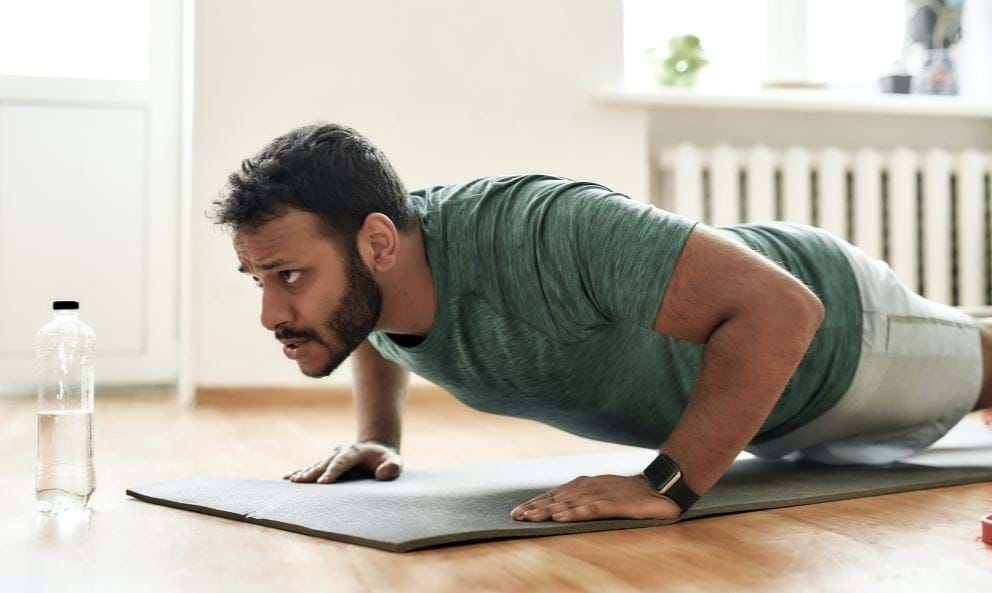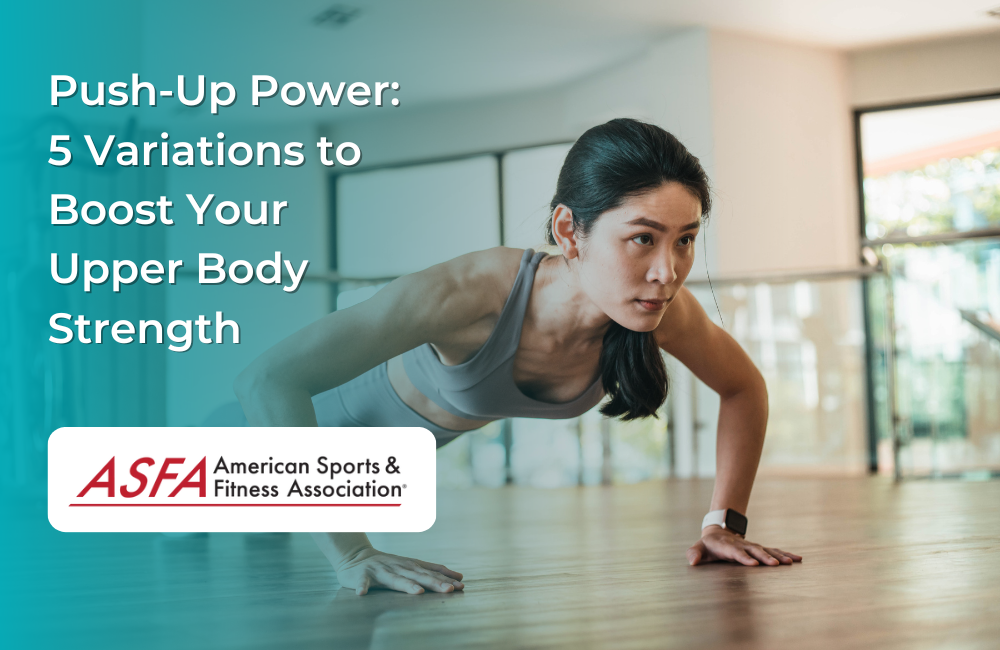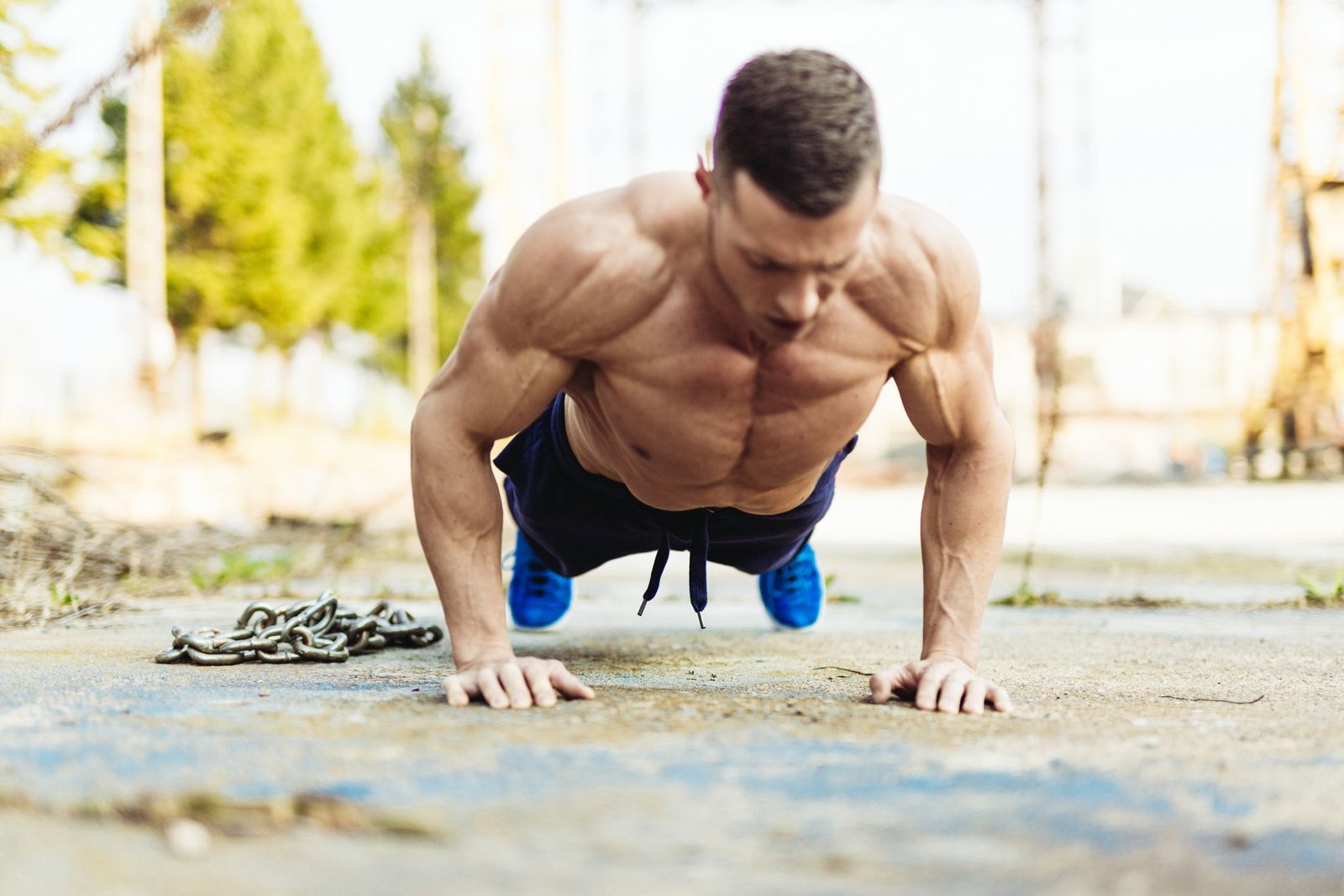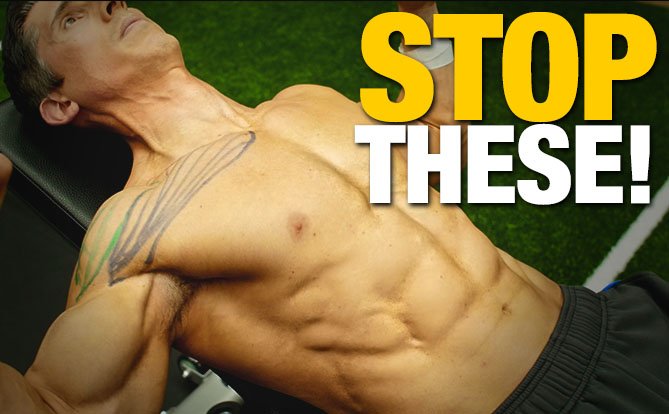Press Up is an upper-body exercise targeting chest, arms, and shoulders. It strengthens muscles and supports body toning.
The Press Up, commonly known as the push-up, is a fundamental bodyweight exercise that is essential in most fitness routines. It’s a versatile move that requires no equipment and can be done almost anywhere, making it ideal for at-home workouts.
This exercise not only helps build strength in the upper body but also engages the core, providing a modest workout for the abs. Perfecting the form of a Press Up can lead to improved posture and muscle balance. Incorporating this exercise into your routine can enhance overall fitness, assist with weight management, and increase muscle definition. For athletes and fitness enthusiasts alike, mastering the Press Up is a step towards a stronger and more resilient physique.
The Power Of Push-ups
Push-ups stand as one of the most effective exercises. They need no equipment. Your body is your gym. This exercise strengthens muscles and boosts endurance. Everyone can do push-ups anywhere, anytime.
Core Benefits For Upper Body
Push-ups work the upper body intensely. They benefit muscles in your chest, shoulders, triceps, and core. The push-up engages your entire upper body, making it stronger and more resilient. Regular practice leads to improved posture and reduces the risk of shoulder and back injuries. Here’s how:
- Pectoral Muscles: Chest gets toned.
- Deltoids: Shoulders become broader.
- Triceps: Arms gain strength.
- Core Muscles: Tightens your abs.
Muscle Groups Targeted
Push-ups are a compound exercise. This means they target multiple muscle groups at once. Below is a list of the primary muscles that push-ups engage:
| Muscle Group | Function |
|---|---|
| Pectoral Muscles | These are the main muscles used during push-ups. |
| Deltoids | They help you lift your body off the ground. |
| Triceps | These help you extend your elbows. |
| Abdominals | They stabilize your body during the move. |
| Erector Spinae | These muscles support your spine. |

Credit: www.puregym.com
Classic Press-up Mastery
The classic press-up remains a powerhouse for upper body strength. This simple exercise, often known as a push-up, targets your chest, shoulders, triceps, and core. Mastering the press-up is about more than just dropping to the ground and pushing up. It’s about precise movements and maximizing every rep. Let’s unpack the secrets to perfecting this timeless move.
Proper Form And Technique
Achieving the ideal press-up starts with proper form and technique. Before you begin, remember, alignment is key.
- Start on your hands and toes.
- Keep your hands shoulder-width apart.
- Position your feet to be comfortably apart.
- Engage your core and keep your back flat.
- Your body should create a straight line from heels to head.
- Breathe in as you lower your body until your chest grazes the floor.
- Exhale as you push back up to the starting position.
Common Mistakes To Avoid
| Mistake | Impact | Correction |
|---|---|---|
| Sagging hips | Strains lower back | Engage core muscles |
| Piking hips | Reduces core engagement | Maintain a straight line |
| Elbows flare out | Stresses shoulders | Keep elbows at 45 degrees |
| Head droop | Misaligns neck and spine | Look slightly ahead |
| Half range motions | Reduces muscle work | Full descent until chest nears floor |
Press-up mastery hinges on keen attention to form, technique, and common errors. Authentically refine these aspects, and you’ll build a rock-solid foundation, tapping into the full benefits of this classic move.
Elevating Difficulty With Variations
Press Up power-up time! You know the classic press up. It’s great, right? But what if it’s getting too easy for you? Let’s kick it up a notch! Add some zest to your workout routine with press up variations. These cool moves will not only test your muscles but will also keep your fitness journey fresh and exciting. Get ready to push your limits and build more strength with each variation.
Wide Grip Push-ups
Time to spread those arms! The Wide Grip Push-Up makes your chest work harder. You place your hands wider than your shoulders. It feels different, right? This small change means a big challenge for your upper body. Get ready for a broad chest and powerful shoulders with every push.
Diamond Push-ups
Bring those hands together. Diamond Push-Ups shape up your triceps. You start by making a diamond shape with your hands under your chest. Go down and push up. Feel the burn? That’s your triceps transforming into tricep-tastic muscles! These push-ups also fire up your core for an extra ab-tastic workout.
Incline And Decline Push-ups
Play with angles! Make gravity your gym buddy with Incline and Decline Push-Ups. Put your feet up for decline push-ups. This targets your upper chest and shoulders. Hands up for incline push-ups. Now you’re hitting the lower chest. This version is also easier on the wrists. Either way, you’re in for a gravity-defying challenge and a full chest workout.
- Incline Push-Up: Hands on elevated surface.
- Decline Push-Up: Feet on elevated surface.

Credit: www.menshealth.com
Explosive Push-ups For Power
Explosive push-ups inject dynamic power into your workout routine. These exercises develop strength and speed, essential for many athletic activities. By propelling your body off the ground, you challenge your muscles to react with more force. Engage in explosive push-ups for a more robust and powerful upper body.
Clap Push-ups
Clap push-ups take traditional push-ups to the next level. They build upper body strength and enhance hand speed. Here is a simple guide to perform them correctly:
- Start in a standard push-up position.
- Lower your body to the floor.
- Push up with force, lift your hands, and clap in mid-air.
- Land softly, absorbing the impact.
- Repeat for desired reps.
Plyometric Push-ups
Plyometric push-ups are all about explosive power. These push-ups improve muscular endurance and explosive movements:
- Begin in a push-up position.
- Lower yourself down rapidly.
- Explode up, lifting your hands off the ground.
- Try variations by using one hand, or alternating.
- Ensure good form for safety and effectiveness.
| Exercise | Focus Area | Benefits |
|---|---|---|
| Clap Push-Ups | Chest, Shoulders, Triceps | Hand speed, Coordination |
| Plyometric Push-Ups | Upper Body Muscles | Endurance, Explosive Strength |
Isometric Holds For Strength
Isometric holds can soar your strength training to new heights. Stronger muscles await with these powerful exercises. They require no movement, but they challenge your body deeply. Build your strength by staying still. Ready to try?
Plank Position Holds
The Plank Position is a powerhouse for your core. It uses your body weight to create tension. To do a Plank Hold:
- Get on the floor on your hands and toes.
- Your body should be straight, like a board.
- Hold this position and don’t let your hips sag.
Start with 20 seconds and increase over time.
Bottom Push-up Holds
Bottom Push-Up Holds will power up your chest and arms. For Bottom Push-Up Holds:
- Assume the start of a push-up.
- Lower yourself until your chest almost touches the floor.
- Stay in this position, keeping your muscles tight.
Aim to hold for 10 seconds, then work your way up. Do these regularly for impressive gains.

Credit: www.americansportandfitness.com
Integrating Press-ups Into A Routine
Press-ups, or push-ups, play a crucial role in building strength and endurance. Integrating them into your daily routine takes careful planning. Be ready to boost overall fitness and sculpt your upper body with these simple steps.
Creating A Balanced Workout Plan
Combining exercises ensures your body remains balanced and injury-free. See the table below for a weekly workout schedule including press-ups:
| Day | Workout Focus | Press-Up Reps |
|---|---|---|
| Monday | Upper Body Strength | 3 sets of 10 |
| Wednesday | Core and Agility | 3 sets of 12 |
| Friday | Total Body Circuit | 3 sets of 15 |
Rest between sets ensures muscle recovery. Gradually increase reps for more challenge.
Combining Push-ups With Other Exercises
Press-ups work well with other exercises for a full-body workout. Pair them with:
- Squats: For lower body strength
- Planks: To enhance core stability
- Burpees: For a high-intensity cardio boost
Try this simple circuit:
- 10 press-ups
- 15 squats
- 30 seconds plank
- 5 burpees
- Rest for 60 seconds
Repeat the circuit 3-5 times. Adjust the routine to fit your level.
Frequently Asked Questions Of Press Up
Is It A Push-up Or Press-up?
A push-up and a press-up refer to the same exercise, which involves raising and lowering the body using the arms while facing downward. Both terms are commonly used interchangeably.
What Is The Meaning Of Press-ups?
Press-ups, also known as push-ups, are a bodyweight exercise that strengthens the upper body and core by raising and lowering the body using the arms.
How Do I Do A Press-up?
Start in a plank position, hands under shoulders, body straight. Lower your body until elbows form a 90-degree angle. Push up through your palms, returning to the starting position. Keep your core engaged and back flat throughout the movement. Repeat as desired.
What Do Americans Call Press-ups?
Americans commonly refer to press-ups as push-ups. This exercise is a popular bodyweight movement for strengthening the upper body.
Conclusion
Mastering the press-up can significantly enhance your fitness journey. It boosts strength, promotes endurance, and sculpts your physique. Consistent practice can unlock these benefits. So, embrace the challenge, incorporate this classic move into your routine, and witness your body’s remarkable transformation.
Stay strong and press on!


